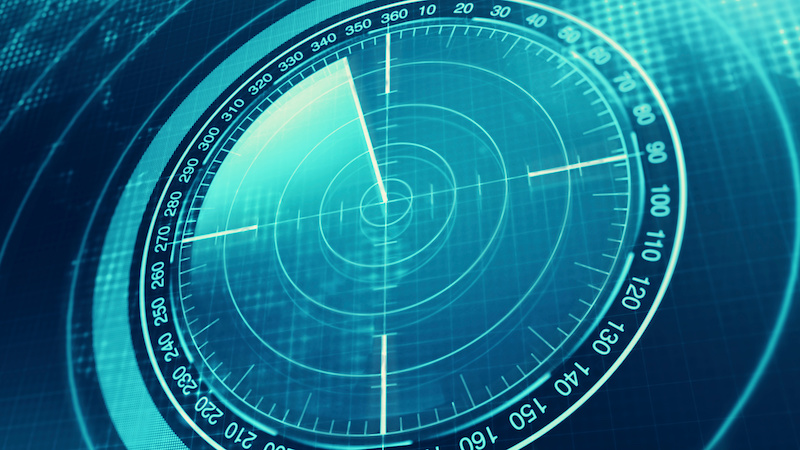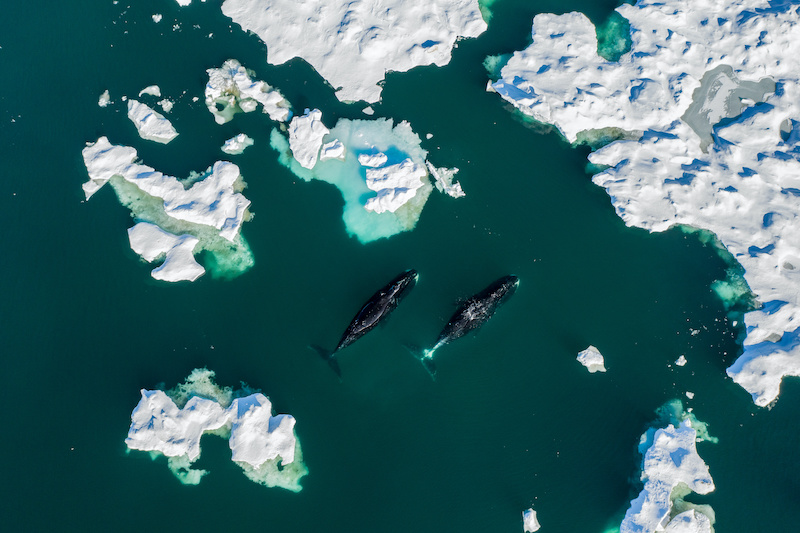Create a Quieter Ocean for World Oceans Day
Undersea noise pollution isn't as apparent to human beings as other threats to the oceans, but it's a real problem.
May 15, 2024
June 8 is World Oceans Day, set aside by the United Nations to focus attention on the threats that face the world's seas, and ways to protect them. Today, we explore one of the more serious challenges: ocean noise pollution.
From above, oceans look like tranquil places.
They are far from it.
Underwater, sound travels more than four times as quickly as in air. Especially at low-frequencies, it can travel thousands of meters without losing clarity, reaching depths even marine scientists didn't imagine. Marine ecologist Carlos Duarte, while listening to a hydrophone recording of whale songs in the deep ocean, was surprised at the unmistakable sound of rainfall on the surface miles above.
The din of human activity is loud, too. Especially in busy shipping lanes such as the Suez Canal, for sea creatures, “it's like having a mega-freeway in your backyard," says Ben Halpern, coauthor with Duarte of "The soundscape of the Anthropocene ocean" published in the journal Science.
Hearing is seeing
Human beings are primarily visual. Marine animals are much less so. They use sound to navigate, find food, and communicate. “This makes the ocean soundscape one of the most important, and perhaps under-appreciated, aspects of the marine environment," Duarte and his co-authors wrote.
The team documented the damaging effect of human-caused ocean noise pollution on marine animals and their ecosystems around the world, drawing from more than 10,000 papers.
Much of the human noise in the sea is sonar, which dolphins and whales use as well. Dolphins must find and identify food in murky water. When they emit the short bursts we hear as clicks, they create sound waves that bounce off objects and return to them with information, sometimes far beyond what we can see with our eyes. The skill is called echolocation.
Bottlenose dolphins can spy a ping-pong ball-size object from a football field away. When a dolphin echolocates on a person, it might see muscle and bone tissue, scars, and metal pins or rods used in surgical repair. With this exquisite sensitivity, you can imagine that sonar noise bothers sea animals, especially sea mammals, even more than intrusive sound bothers us.
Noisy humans in quiet oceans
Listening to underwater sounds has helped us measure global warming, track magma on the sea floor during volcanic eruptions, and hear earthquakes. Scientists use a deep ocean channel, called SOFAR (Sound Fixing And Ranging), to track the sound of a body or plane hitting the ocean over long distances and locate and rescue downed pilots.
If only we just listened.

The loudest and most disruptive human noise pollution in the sea comes from military sonar, oil exploration, and everyday shipping traffic.
Naval sonar systems are like sound floodlights, sending their acoustic beam for many miles. Just one low-frequency active sonar loudspeaker can be as loud as a twin-engine fighter jet at takeoff.
The effect on whales is devastating. They are driven from their usual habitat and behavior and die when they flee rapidly to the surface or to shore to avoid the din. Environmental groups and the U.S. Navy have been in the courts over the issue for decades.
Energy companies make even more noise looking for oil and gas deposits in the seafloor. During seismic surveys, ships might fire up to 20 air guns at time, creating pressurized air bubbles. The blasts are repeated as often as every 10 seconds day after day and can travel underwater for up to 2,500 miles.
Orcas, dolphins, and other marine mammals are particularly sensitive to sound pollution, which can mask vocalizations and make it impossible to find mates.
Everyday shipping traffic is a constant irritation and even motorboats can delay migration and strand whales in ice.
Then there's the effect of climate change. When the ocean absorbs more and more atmospheric carbon, it becomes more acidic, with the result that low-frequency sound travels further and is louder to underwater creatures. Shrinking ice creates more noise from wind, which ice buffers.
What we can do
The Science paper recommends a number of fixes:
- Quiet offshore wind farm construction. For example, surrounding piledrivers with a curtain of bubbles to muffle sound waves.
- Use lower pressure in seismic surveys.
- Slow shipping speeds and reroute ships away from endangered marine animals.
- Encourage ship designs that cut propeller noise. For example, one Danish shipping company retrofitted hulls and installed more efficient propellers on 11 of its ships. Afterward, the ships were quieter underwater by six to eight decibels.

The happy news here is that the damage from noise in the ocean seems to go away when the noise stops, so it is easier to address than the effects of an oil spill, which linger.
The ocean is an ocean of sound. In recordings of songs from bowhead whales near Greenland, they can be heard singing loudly, 24 hours a day, from fall to spring even in the darkness of winter.
Their songs are free-form, and every season they invent a new set of dozens of songs. “If humpback whale song is like classical music, bowheads are jazz," said oceanographer Kate Stafford.
Let's turn down our volume and let sea creatures hear their own music.







